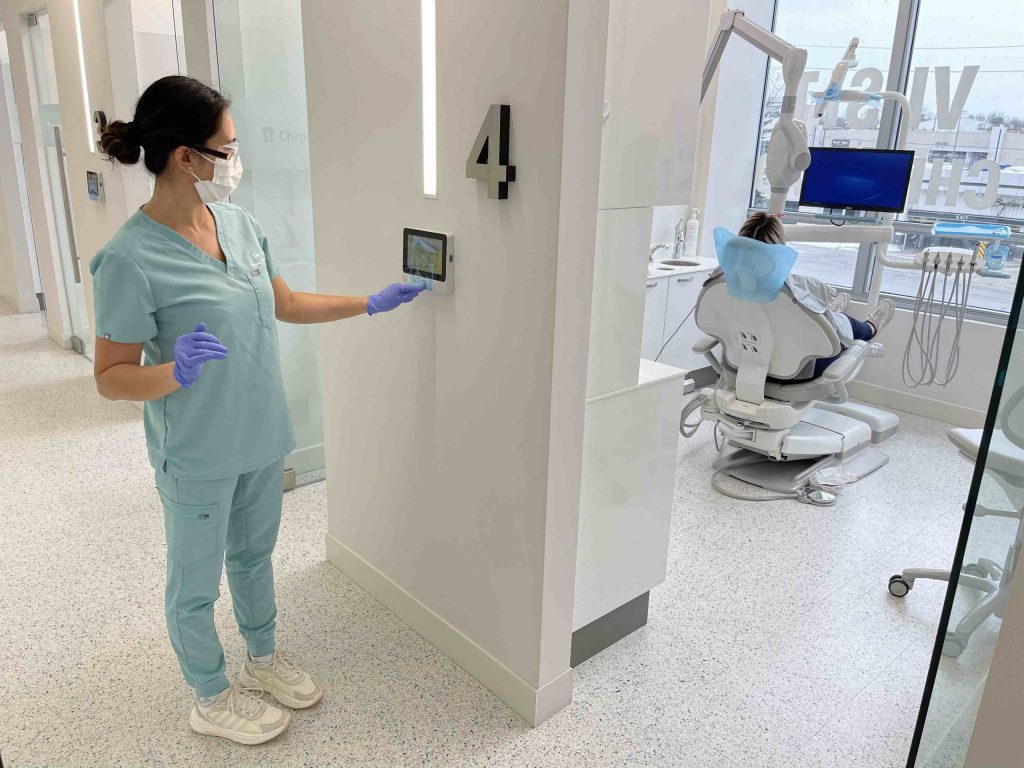Are Dental X-Rays Safe and Necessary?

X-Ray imaging technology has been used by medical professionals since 1895, and the benefits of this technology are numerous. Being able to detect cavities or fractures without invasive procedures makes this technology invaluable – however, what about the risks?
Dental x-rays are an important part of healthcare for many people, yet there is still much debate surrounding them. It’s therefore important to explore both sides of the argument: the potential harm that could arise from radiation exposure, versus the advantages provided through early detection.
Different Types of Dental X-Rays
There are several types of dental x-rays that can be employed for different diagnostic purposes, each providing valuable information. The most common type of dental x-ray is a bitewing, which allows your dentist to evaluate the contours and surfaces of both upper and lower back teeth simultaneously.
Meanwhile, periapical radiographs show an entire tooth from the crown to the root tip, while occlusal images display all the biting surfaces at once. Panoramic views provide a wide view of the entire mouth including facial bones, such as jaw joints, sinuses, nasal areas, and even impacted wisdom teeth.
Lastly, cone beam computed tomography (CBCT) utilizes digital imaging technology for more detailed 3D scans, allowing visualization below soft tissue levels like bone or nerves.
All these tools can be used to detect cavities between teeth, decay beneath existing fillings, periodontal disease, cysts or tumours in bones surrounding roots, abscesses near roots tips, and many other conditions related to oral health.
How Are X-Rays Used to Diagnose Oral Health Issues?
X-rays can be utilized in several ways when it comes to diagnosing oral health problems. They can:
- Detect cavities between teeth or under fillings,
- Identify bone loss due to periodontal disease,
- Evaluate developmental abnormalities such as cysts, tumours, or impacted teeth, and
- Determine the presence of infection or abscesses within jawbone tissue.
Additionally, they also allow dentists to assess existing restorations for any signs of wear or damage. As a result, regular dental x-rays are necessary for detecting potential issues early on before they can cause further harm and discomfort.
The Impact of Dental X-Rays on Overall Health
Dental x-rays can offer valuable insight beyond simply identifying and diagnosing oral issues – they are also used to assess any potential diseases or abnormalities that may be present in the mouth, such as cavities, tumours, infections, impacted teeth, and more.
Furthermore, these imaging techniques can provide insight into the condition of surrounding bones and tissues, which helps dentists understand if there is any risk of disease progression or future complications.
However, as with all medical procedures, dental x-rays come with certain risks associated with radiation exposure. Teeth doctors must carefully weigh these risks against the benefits provided by utilizing this form of imaging technology in order to make informed decisions about each individual case.
Overall, dental X-rays can provide invaluable insight into your oral health, and allow for early detection of potential problems before they become more serious issues down the line. They also help dentists create tailored treatment plans in order to maximize outcomes for your unique needs.
Frequently Asked Questions
How Often Should I Have Dental X-Rays Taken?
The imaging technology of dental x-rays is used to detect issues below the surface of the teeth and gums that may not be visible during a visual examination alone. Therefore, it is important to understand when X-rays are necessary, and how often you should have them taken.
The frequency with which you may need dental X-rays taken can vary significantly depending on several factors including age, oral health history, and risk of developing certain conditions. For example, children generally require more frequent appointments, as their mouths develop rapidly in comparison to adults who typically need fewer visits due to slower changes over time.
Additionally, individuals with existing cavities or other oral problems will likely require more frequent screenings than those without any identified concerns.
It is recommended that you speak directly with your dentist about what type of schedule would be best for your particular situation.
Dental X-rays provide valuable insight into potential issues beneath the surface of the mouth, and it is important to make sure these tests are conducted regularly so that any underlying problems can be detected early before they become severe. By having an open dialogue with your dentist regarding your unique circumstances, you can ensure comprehensive care tailored specifically to your needs.
Are There Any Alternatives to Dental X-Rays?
Dental x-rays provide an important diagnostic tool for dentists to better understand the health of your mouth and teeth. However, there are lasting concerns among many patients about the safety of x-ray procedures due to potential radiation exposure. This raises the question: are there any alternatives to dental x-rays?
There are several non-invasive options available that may be used either in place or in addition to traditional x-rays. These include:
- Intraoral cameras: these allow dentists to get a close up view of difficult areas inside the mouth
- Optical imaging systems: these use low levels of light and lasers to capture images within the oral cavity
- Diagnodent laser caries detection system: this system uses fluorescent light technology to detect small cavities on hard surfaces such as enamel and dentin
- Salivary diagnostics tests: these tests can measure pH levels in saliva, giving insight into acidity in the mouth associated with bacteria growth.
These alternatives offer patients and practitioners alike greater comfort when it comes to understanding their state of oral health without having to resort solely to traditional x-ray methods. Furthermore, they also help reduce radiation exposure from these types of procedures while still providing pertinent information about your overall dental well-being.
